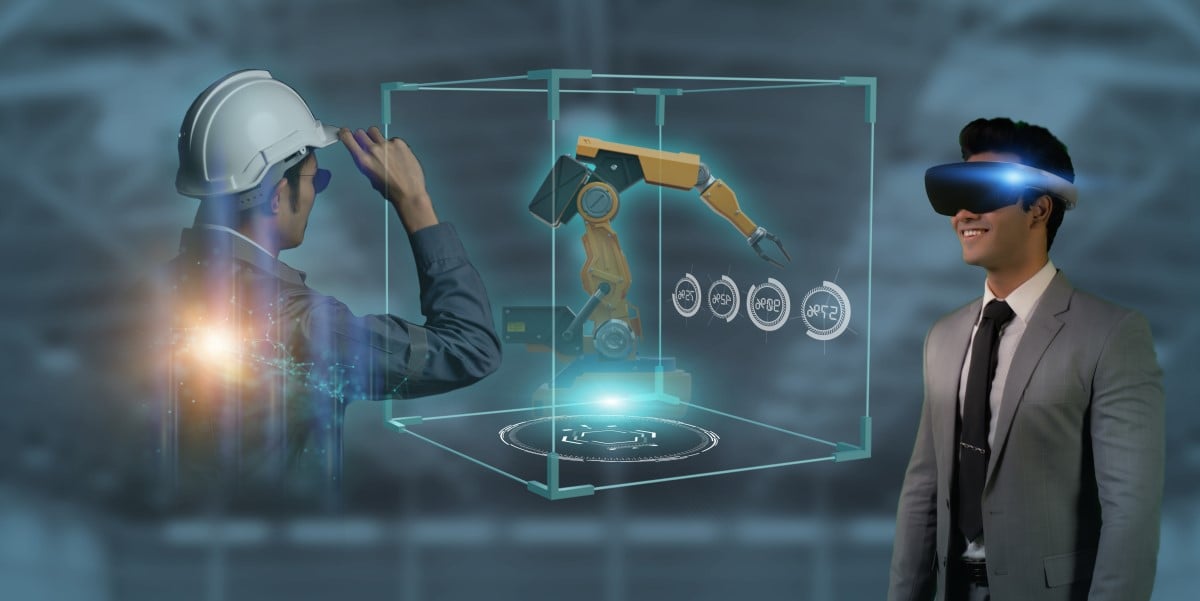
Taiwanese manufacturing giant Foxconn plans to build so-called “AI factories” with the help of Nvidia.
The collaboration, announced during a meeting between Nvidia CEO Jensen Huang and Foxconn CEO Young Liu this week, involves the large-scale deployment of the chipmaker’s GPU systems to power a variety of industrial applications.
“A new type of manufacturing has emerged — the production of intelligence. And the datacenters that produce it are AI factories,” Huang said per a statement. “Foxconn, the world’s largest manufacturer, has the expertise and scale to build AI factories globally.”
If it wasn’t clear, the term “AI factory” is a metaphor for taking unstructured data from automobiles, robots, IoT sensors dotted around a city, and other sources and turning it into a useful product, much in the same way traditional factories might take in raw materials on one end and pop out an automobile at the other end.
AI factories are “specially built for processing, refining, and transforming vast amounts of data into valuable AI models and tokens,” the chipmaker explained in a blog post. In other words, they’re datacenters brimming with very expensive GPU systems tailored to support the customers’ various business verticals.
In Foxconn’s case, the iPhone maker plans to deploy a variety of HGX, GH200 Super Chips, and OVX reference designs alongside plenty of Mellanox-derived networking kit.
These systems will support a variety of products and services built atop Nvidia’s enterprise software platforms. For instance, Foxconn plans to build a “Smart EV” platform using the chipmaker’s upcoming Drive Thor autonomous driving computer system, due out in 2025. It’s worth noting that Foxconn already builds electronic control units for automobiles using Nvidia’s Drive Orin platform.
Foxconn also has its eye on “smart manufacturing” applications that take advantage of Nvidia’s Isaac autonomous robotics platform, and a “smart city” platform that incorporates the GPU-slinger’s Metropolis video analytics service. That said, smart cities talk has been around for a while with very little progress.
So, not only does Nvidia have Foxconn hooked on what’s likely to be a substantial number of GPUs, but its growing software business as well.
Another use case Nvidia has talked up in the past is the use of OVX systems developed to power its Omniverse platform as a tool to visualize machine learning and sensor data to create digital twins of actual factory floors or warehouses. The idea here is these digital twins and can be used to simulate whether operational changes will bear fruit before they’re implemented in the real world – think Excel but stepped up a notch.
“Simulating the entire robotics and automation pipeline from end-to-end provides Foxconn with a path to operational efficiency gains and saving time and costs,” Nvidia claimed.
What happened to the ‘Industrial Metaverse?’
Nvidia has spent the past few years working to cultivate new markets for accelerated computing, beyond those typically associated with hyperscale and cloud datacenters.
The idea of an “AI factory” isn’t new, though the buzzword of choice may have changed following the fervor around generative AI apps like ChatGPT, Stable Diffusion, and other large language models.
In mid-2022, Nvidia was throwing around terms like “industrial metaverse” amid a collaboration with German multinational Siemens to bring photorealistic digital twins to mainstream industry using its Omniverse platform.
As we mentioned earlier, Nvidia is still pushing this idea along with its more graphics-optimized OVX systems. But since the hype around the much-touted metaverse has seemingly fizzled, at least according to Gartner, Nvidia appears to have pivoted to AI factories instead. ®
- SEO Powered Content & PR Distribution. Get Amplified Today.
- PlatoData.Network Vertical Generative Ai. Empower Yourself. Access Here.
- PlatoAiStream. Web3 Intelligence. Knowledge Amplified. Access Here.
- PlatoESG. Carbon, CleanTech, Energy, Environment, Solar, Waste Management. Access Here.
- PlatoHealth. Biotech and Clinical Trials Intelligence. Access Here.
- Source: https://go.theregister.com/feed/www.theregister.com/2023/10/18/nvidia_sells_foxconn_on_ai/



